Indian actor Om Puri has passed away after a massive heart attack in Mumbai early this morning, Indian Express reported. He was 66.
His close friend, filmmaker Ashoke Pandit, was the first to announce his passing on Twitter:

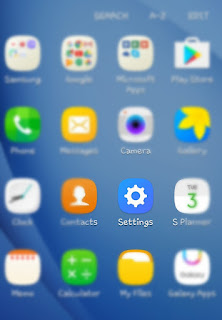
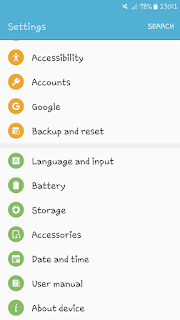
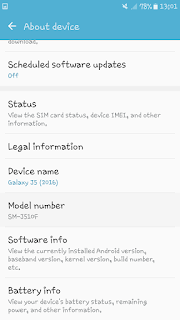
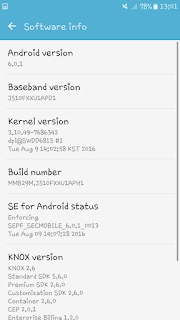
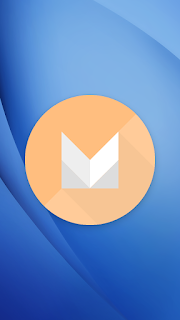










 |
| Top 2016 Hollywood Movies that you need to watch - FUNWALAMAZA |






 |
| Top 2016 Hollywood Movies that you need to watch - FUNWALAMAZA |
 |
| Mano Animation Studio |
 |
| Glassworker |

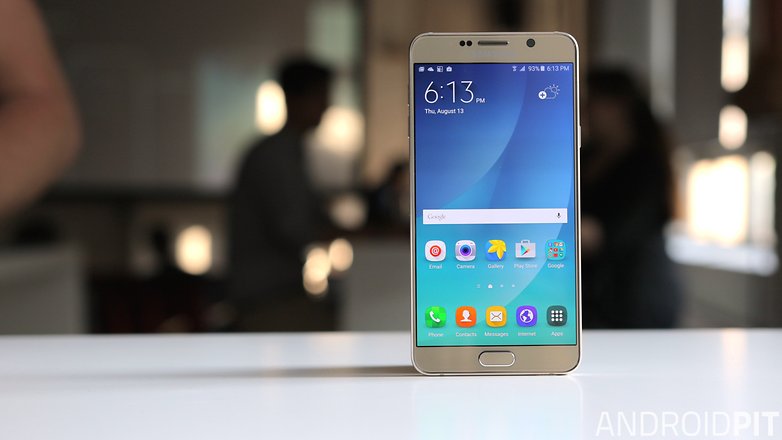
 |
| Copyright Funwalamaza |
 |
| Copyright Funwalamaza |
 |
| Copyright Funwalamaza |
 |
| Copyright Funwalamaza |
 |
| Copyright Funwalamaza |
 |
| Copyright Funwalamaza |
 |
| Copyright Funwalamaza |
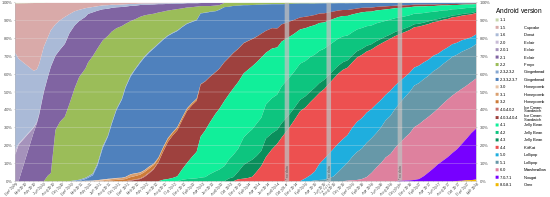
| Code name | Version number | Initial release date | API level |
|---|---|---|---|
| Cupcake | 1.5 | April 27, 2009 | 3 |
| Donut | 1.6 | September 15, 2009 | 4 |
| Eclair | 2.0–2.1 | October 26, 2009 | 5-7 |
| Froyo | 2.2–2.2.3 | May 20, 2010 | 8 |
| Gingerbread | 2.3–2.3.7 | December 6, 2010 | 9-10 |
| Honeycomb[a] | 3.0–3.2.6 | February 22, 2011 | 11-13 |
| Ice Cream Sandwich | 4.0–4.0.4 | October 18, 2011 | 14-15 |
| Jelly Bean | 4.1–4.3.1 | July 9, 2012 | 16-18 |
| KitKat | 4.4–4.4.4, 4.4W–4.4W.2 | October 31, 2013 | 19-20 |
| Lollipop | 5.0–5.1.1 | November 12, 2014 | 21-22 |
| Marshmallow | 6.0–6.0.1 | October 5, 2015 | 23 |
| N | 6.X | March 9, 2016 | N |
| Screenshots of alpha versions running on old SDK emulators | ||||
|---|---|---|---|---|
|
| Screenshots of beta versions running on old SDK emulators | ||||||||||||
|---|---|---|---|---|---|---|---|---|---|---|---|---|
|
[hide]Android 1.0 (API level 1)
Android 1.0 (API level 1)
| |||
|---|---|---|---|
| Android 1.0, the first commercial version of the software, was released on September 23, 2008.[20] The first commercially available Android device was the HTC Dream.[21] Android 1.0 incorporated the following features: | |||
| Version | Release date | Features | Image(s) |
| 1.0 | September 23, 2008 |
|  |
[hide]Android 1.1 (API level 2)
Android 1.1 (API level 2)
| |||
|---|---|---|---|
| On February 9, 2009, the Android 1.1 update was released, initially for the HTC Dream only. Android 1.1 was known as "Petit Four" internally, though this name was not used officially.[28] The update resolved bugs, changed the Android API and added a number of features:[29] | |||
| Version | Release date | Features | Image(s) |
| 1.1 | February 9, 2009 |
|  |
[hide]Android 1.5 Cupcake (API level 3)
Android 1.5 Cupcake (API level 3)
| |||
|---|---|---|---|
| On April 27, 2009, the Android 1.5 update was released, based on Linux kernel 2.6.27.[30][31] This was the first release to officially use a codename based on a dessert item ("Cupcake"), a theme which would be used for all releases henceforth. The update included several new features and UI amendments:[32] | |||
| Version | Release date | Features | Image(s) |
| 1.5 | April 27, 2009[30] |
|  |
[hide]Android 1.6 Donut(API level 4)
Android 1.6 Donut (API level 4)
| |||
|---|---|---|---|
| On September 15, 2009, the Android 1.6 SDK – dubbed Donut – was released, based on Linux kernel 2.6.29.[34][35][36] Included in the update were numerous new features:[34] | |||
| Version | Release date | Features | Image(s) |
| 1.6 | September 15, 2009[35] |
|  Android 1.6 on an Android SDK emulator |
[hide]Android 2.0 Eclair(API level 5)
Android 2.0 Eclair (API level 5)
| |||
|---|---|---|---|
| On October 26, 2009, the Android 2.0 SDK was released, based on Linux kernel 2.6.29 and codenamed Eclair.[37] Changes include the ones listed below.[38] | |||
| Version | Release date | Features | Image(s) |
| 2.0 | October 26, 2009 |
|  Android 2.0 on an Android SDK emulator |
[hide]Android 2.0.1 Eclair(API level 6)
Android 2.0.1 Eclair (API level 6)
| |||
|---|---|---|---|
| Version | Release date | Features | Image(s) |
| 2.0.1 | December 3, 2009[40] |
| |
[hide]Android 2.1 Eclair(API level 7)
Android 2.1 Eclair (API level 7)
| |||
|---|---|---|---|
| Version | Release date | Features | Image(s) |
| 2.1 | January 12, 2010[41] |
|  |
[hide]Android 2.2–2.2.3 Froyo(API level 8)
Android 2.2–2.2.3 Froyo (API level 8)
| |||
|---|---|---|---|
| On May 20, 2010, the SDK for Android 2.2 (Froyo, short for frozen yogurt) was released, based on Linux kernel 2.6.32.[42] | |||
| Version | Release date | Features | Image(s) |
| 2.2 | May 20, 2010 |
|  |
| 2.2.1 | January 18, 2011 |
| |
| 2.2.2 | January 22, 2011 | ||
| 2.2.3 | November 21, 2011[50] |
| |
[hide]Android 2.3–2.3.2 Gingerbread(API level 9)
Android 2.3–2.3.2 Gingerbread (API level 9)
| |||
|---|---|---|---|
| On December 6, 2010, the Android 2.3 (Gingerbread) SDK was released, based on Linux kernel 2.6.35.[51][52] Changes included:[51] | |||
| Version | Release date | Features | Image(s) |
| 2.3 | December 6, 2010[52] |
|  |
| 2.3.1 | December 2010 |
| |
| 2.3.2 | January 2011 | ||
[hide]Android 2.3.3–2.3.7 Gingerbread(API level 10)
Android 2.3.3–2.3.7 Gingerbread (API level 10)
| |||
|---|---|---|---|
| Version | Release date | Features | Image(s) |
| 2.3.3 | February 9, 2011 |
| |
| 2.3.4 | April 28, 2011[56] |
| |
| 2.3.5 | July 25, 2011 |
| |
| 2.3.6 | September 2, 2011[62] |
| |
| 2.3.7 | September 21, 2011 |
| |
[hide]Android 3.0 Honeycomb(API level 11)
Android 3.0 Honeycomb (API level 11)
| |||
|---|---|---|---|
| On February 22, 2011, the Android 3.0 (Honeycomb) SDK – the first tablet-only Android update – was released, based on Linux kernel 2.6.36.[65][66][67][68] The first device featuring this version, the Motorola Xoom tablet, was released on February 24, 2011.[69] The update's features included:[65] | |||
| Version | Release date | Features | Image(s) |
| 3.0 | February 22, 2011[67] |
| 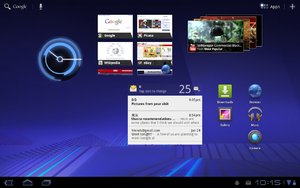 |
[hide]Android 3.1 Honeycomb(API level 12)
Android 3.1 Honeycomb (API level 12)
| |||
|---|---|---|---|
| Version | Release date | Features | Image(s) |
| 3.1 | May 10, 2011[72] |
| |
[hide]Android 3.2–3.2.6 Honeycomb(API level 13)
Android 3.2–3.2.6 Honeycomb (API level 13)
| |||
|---|---|---|---|
| Most first- and second-generation Google TV-enabled devices utilize Honeycomb 3.2.[75] | |||
| Version | Release date | Features | Image(s) |
| 3.2 | July 15, 2011[76] |
| |
| 3.2.1 | September 20, 2011 |
| |
| 3.2.2 | August 30, 2011 |
| |
| 3.2.3 |
| ||
| 3.2.4 | December 2011 |
| |
| 3.2.5 | January 2012 |
| |
| 3.2.6 | February 2012 |
| |
[hide]Android 4.0–4.0.2 Ice Cream Sandwich(API level 14)
Android 4.0–4.0.2 Ice Cream Sandwich (API level 14)
| |||
|---|---|---|---|
| The SDK for Android 4.0.1 (Ice Cream Sandwich), based on Linux kernel 3.0.1,[78] was publicly released on October 19, 2011.[79]Google's Gabe Cohen stated that Android 4.0 was "theoretically compatible" with any Android 2.3.x device in production at that time.[80]The source code for Android 4.0 became available on November 14, 2011.[81] Ice Cream Sandwich was the last version to officially support Adobe Systems' Flash player.[82] The update introduced numerous new features:[83][84][85] | |||
| Version | Release date | Features | Image(s) |
| 4.0 | October 18, 2011[83] |
|  |
| 4.0.1 | October 21, 2011 |
| |
| 4.0.2 | November 28, 2011 |
| |
[hide]Android 4.0.3–4.0.4 Ice Cream Sandwich(API level 15)
Android 4.0.3–4.0.4 Ice Cream Sandwich (API level 15)
| |||
|---|---|---|---|
| Version | Release date | Features | Image(s) |
| 4.0.3 | December 16, 2011[91] |
| |
| 4.0.4 | March 29, 2012[93] |
| |
[hide]Android 4.1–4.1.2 Jelly Bean(API level 16)
Android 4.1–4.1.2 Jelly Bean (API level 16)
| |||
|---|---|---|---|
| Google announced Android 4.1 (Jelly Bean) at the Google I/O conference on June 27, 2012. Based on Linux kernel 3.0.31, Jelly Bean was an incremental update with the primary aim of improving the functionality and performance of the user interface. The performance improvement involved "Project Butter", which uses touch anticipation, triple buffering, extended vsync timing and a fixed frame rate of 60 fps to create a fluid and "buttery-smooth" UI.[95] Android 4.1 Jelly Bean was released to the Android Open Source Project on July 9, 2012,[96] and the Nexus 7 tablet, the first device to run Jelly Bean, was released on July 13, 2012. | |||
| Version | Release date | Features | Image(s) |
| 4.1 | July 9, 2012 |
| 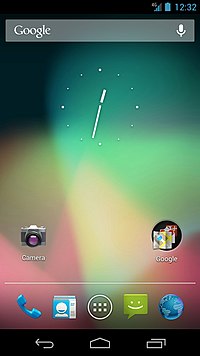 Android 4.1 on the SamsungGalaxy Nexus |
| 4.1.1 | July 11, 2012[100] |
| |
| 4.1.2 | October 9, 2012[101] | ||
[hide]Android 4.2–4.2.2 Jelly Bean(API level 17)
Android 4.2–4.2.2 Jelly Bean (API level 17)
| |||
|---|---|---|---|
| Google was expected to announce Jelly Bean 4.2 at an event in New York City on October 29, 2012, but the event was cancelled due to Hurricane Sandy.[104] Instead of rescheduling the live event, Google announced the new version with a press release, under the slogan "A new flavor of Jelly Bean". Jelly Bean 4.2 was based on Linux kernel 3.4.0, and debuted on Google's Nexus 4 and Nexus 10, which were released on November 13, 2012.[105][106] | |||
| Version | Release date | Features | Image(s) |
| 4.2 | November 13, 2012[107] |
|  Android 4.2 on the Nexus 4 Android 4.2 on the Nexus 4 |
| 4.2.1 | November 27, 2012[112] | ||
| 4.2.2 | February 11, 2013[114] |
| |
[hide]Android 4.3–4.3.1 Jelly Bean(API level 18)
Android 4.3–4.3.1 Jelly Bean (API level 18)
| |||
|---|---|---|---|
| Google released Jelly Bean 4.3 under the slogan "An even sweeter Jelly Bean" on July 24, 2013, during an event in San Franciscocalled "Breakfast with Sundar Pichai". Most Nexus devices received the update within a week, although the second-generation Nexus 7tablet was the first device to officially ship with it.[116] A minor bugfix update was released on August 22, 2013.[117] | |||
| Version | Release date | Features | Image(s) |
| 4.3 | July 24, 2013[118] |
|  |
| 4.3.1 | October 3, 2013[127] |
| |
[hide]Android 4.4–4.4.4 KitKat(API level 19)
Android 4.4–4.4.4 KitKat (API level 19)
| |||
|---|---|---|---|
| Google announced Android 4.4 KitKat on September 3, 2013. Although initially under the "Key Lime Pie" ("KLP") codename, the name was changed because "very few people actually know the taste of a key lime pie."[129] Some technology bloggers also expected the "Key Lime Pie" release to be Android 5.[130] KitKat debuted on Google's Nexus 5 on October 31, 2013, and was optimized to run on a greater range of devices than earlier Android versions, having 512 MB of RAM as a recommended minimum; those improvements were known as "Project Svelte" internally at Google.[131] The required minimum amount of RAM available to Android is 340 MB, and all devices with less than 512 MB of RAM must report themselves as "low RAM" devices.[132] | |||
| Version | Release date | Features | Image(s) |
| 4.4 | October 31, 2013[133][134] |
|  |
| 4.4.1 | December 5, 2013[146] |
| |
| 4.4.2 | December 9, 2013[149] | ||
| 4.4.3 | June 2, 2014[151] | ||
| 4.4.4 | June 19, 2014[154] |
| |
[hide]Android 4.4W–4.4W.2 KitKat, with wearable extensions (API level 20)
Android 4.4W–4.4W.2 KitKat, with wearable extensions (API level 20)
| |||
|---|---|---|---|
| Version | Release date | Features | Image(s) |
| 4.4W[156] | June 25, 2014[157] |
| |
| 4.4W.1 | September 6, 2014[158] |
| |
| 4.4W.2 | October 21, 2014[159] |
| |
[hide]Android 5.0–5.0.2 Lollipop(API level 21)
Android 5.0–5.0.2 Lollipop (API level 21)
| |||
|---|---|---|---|
| Android 5.0 "Lollipop" was unveiled under the codename "Android L" on June 25, 2014, during Google I/O. It became available as official over-the-air (OTA) updates on November 12, 2014, for select devices that run distributions of Android serviced by Google, including Nexus and Google Play edition devices. Its source code was made available on November 3, 2014.[160][161]
Lollipop features a redesigned user interface built around a responsive design language referred to as "material design". Other changes include improvements to the notifications, which can be accessed from the lockscreen and displayed within applications as top-of-the-screen banners. Furthermore, Google made internal changes to the platform, with the Android Runtime (ART) officially replacing Dalvikfor improved application performance, and with changes intended to improve and optimize battery usage, known internally as Project Volta.[162][163][164][165]
| |||
| Version | Release date | Features | Image(s) |
| 5.0[166] | November 12, 2014[167] |
|  |
| 5.0.1 | December 2, 2014[181] |
| |
| 5.0.2 | December 19, 2014[182] | ||
[hide]Android 5.1–5.1.1 Lollipop(API level 22)
Android 5.1–5.1.1 Lollipop (API level 22)
| |||
|---|---|---|---|
| Version | Release date | Features | Image(s) |
| 5.1 | March 9, 2015[184] |
| |
| 5.1.1 | April 21, 2015[187] |
| |
[hide]Android 6.0–6.0.1 Marshmallow(API level 23)
Android 6.0–6.0.1 Marshmallow (API level 23)
| |||
|---|---|---|---|
| Android 6.0 "Marshmallow" was unveiled under the codename "Android M" during Google I/O on May 28, 2015, for the Nexus 5 andNexus 6 phones, Nexus 9 tablet, and Nexus Player set-top box, under the build number MPZ44Q.[189] The third developer preview (MPA44G) was released on August 17, 2015 for the Nexus 5, Nexus 6, Nexus 9 and Nexus Player devices,[190] and was updated to MPA44I that brought fixes related to Android for Work profiles.[191] | |||
| Version | Release date | Features | Image(s) |
| 6.0 | October 5, 2015[192] |
|  |
| 6.0.1 | December 2015 | ||